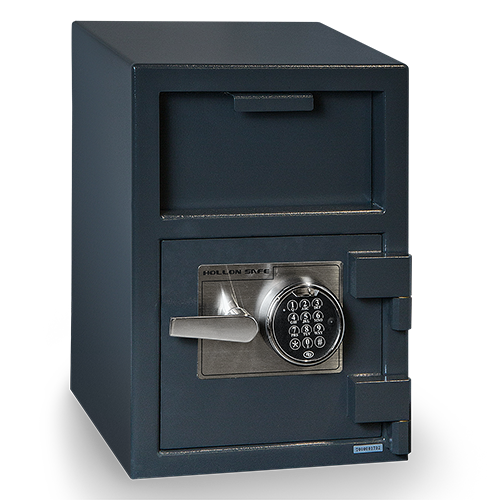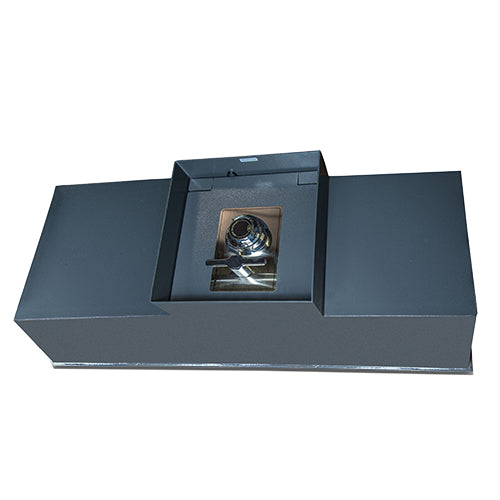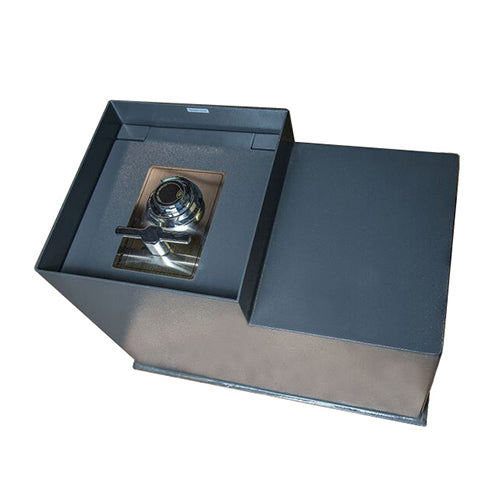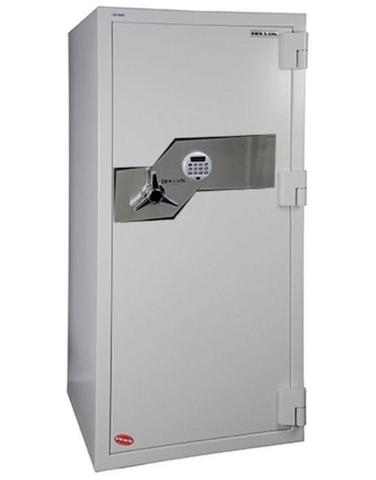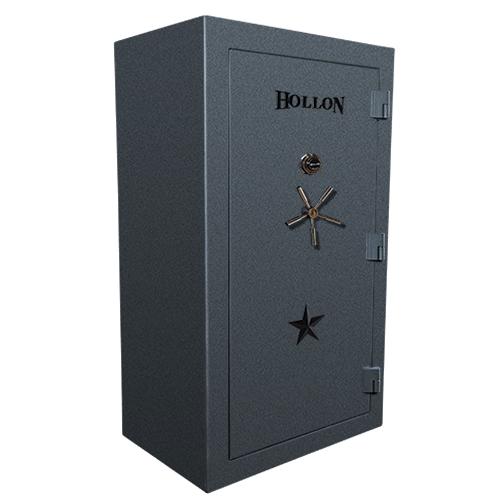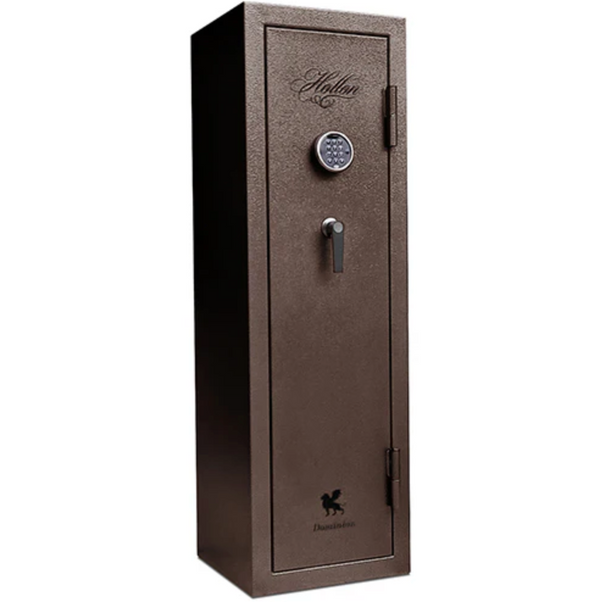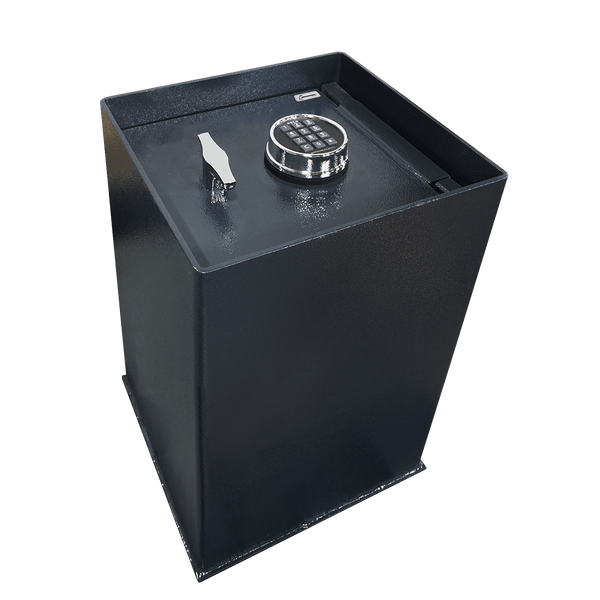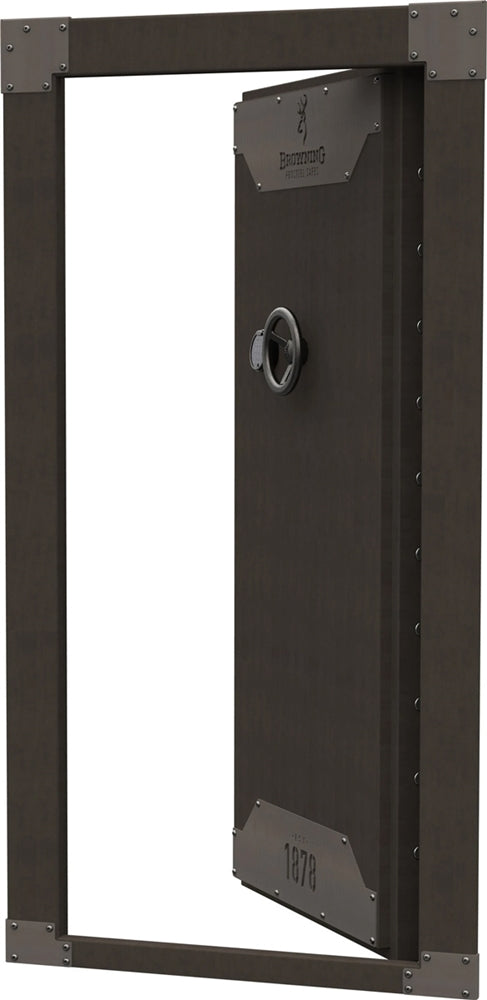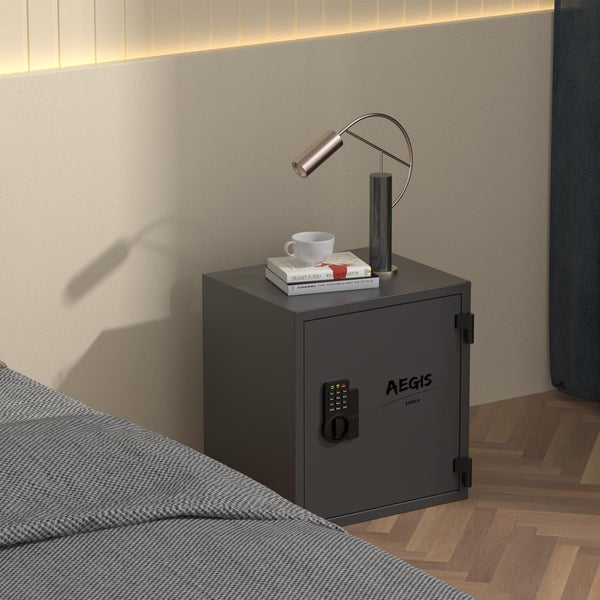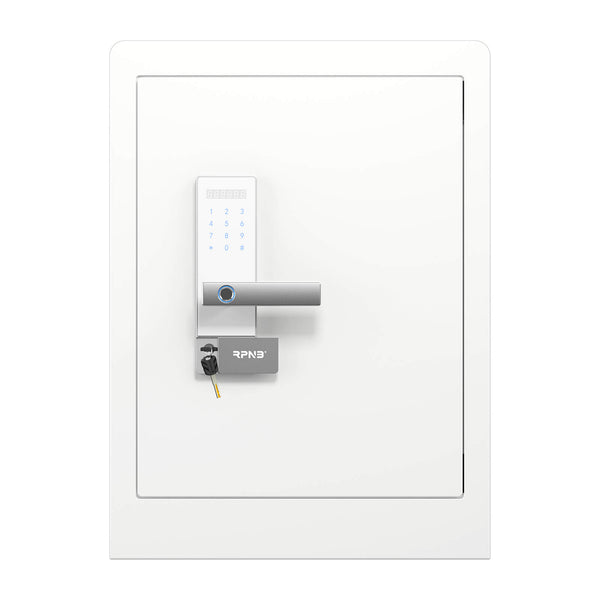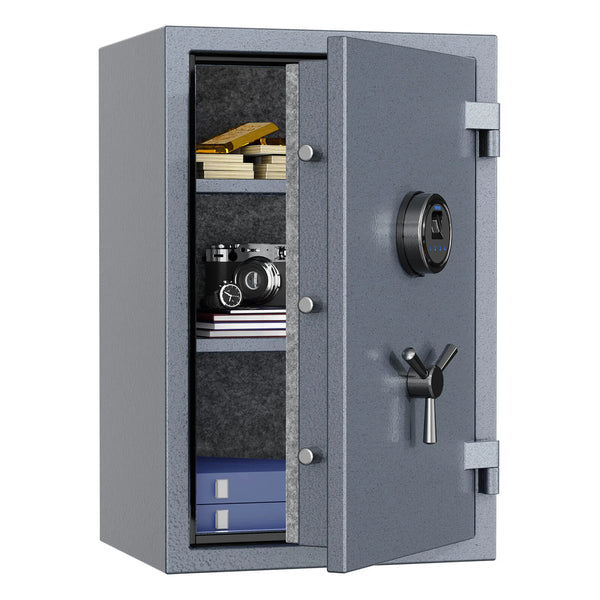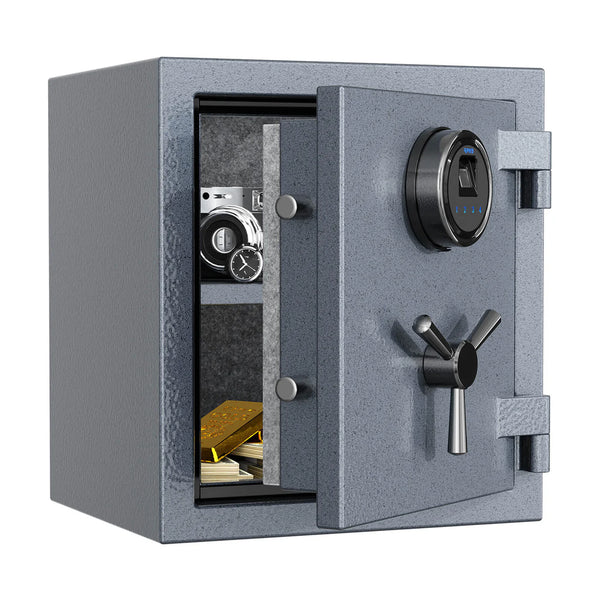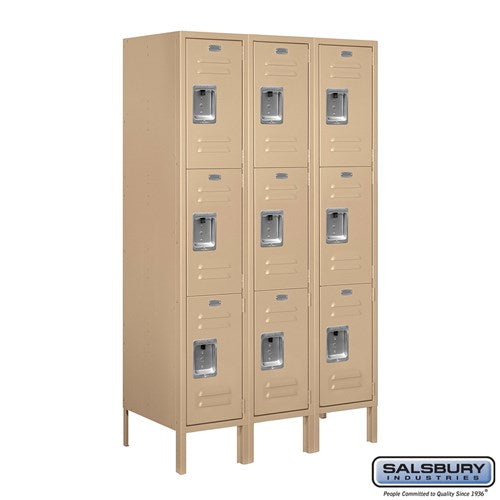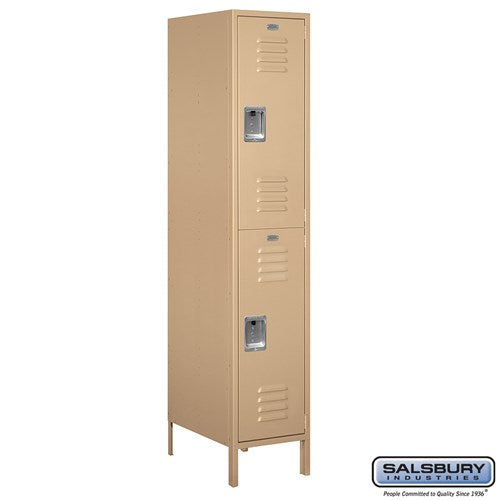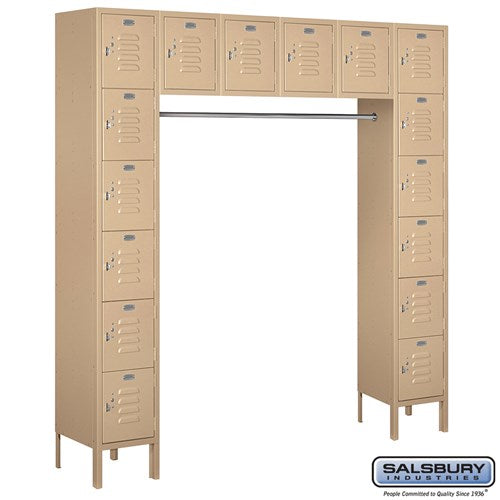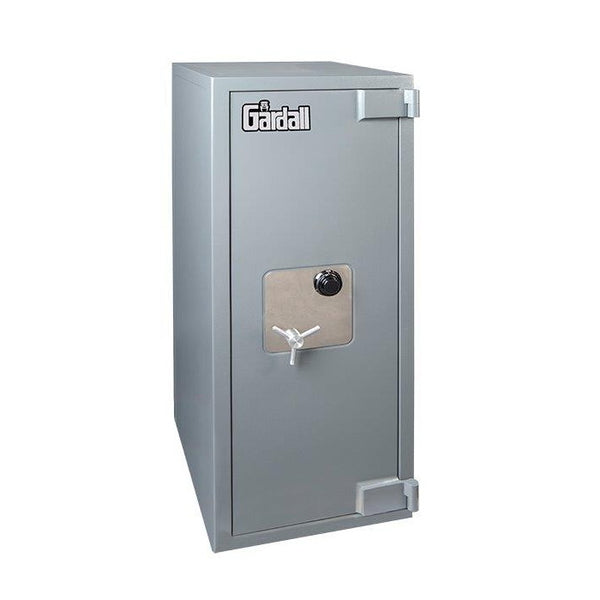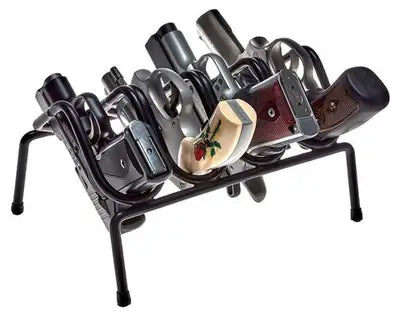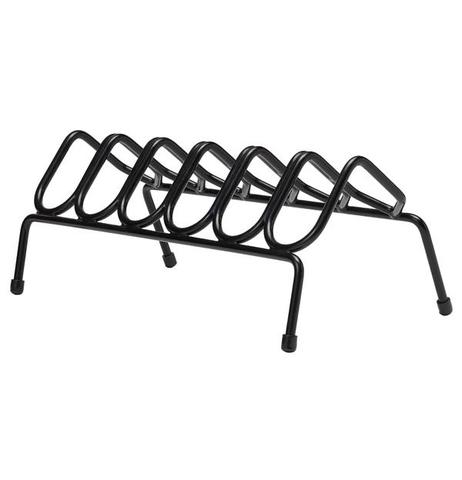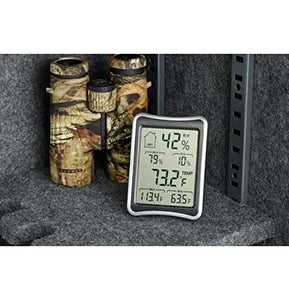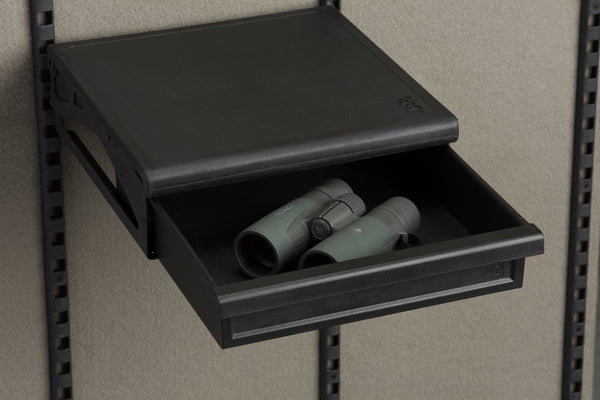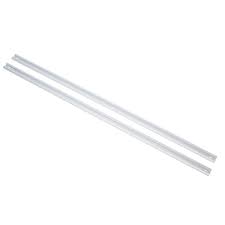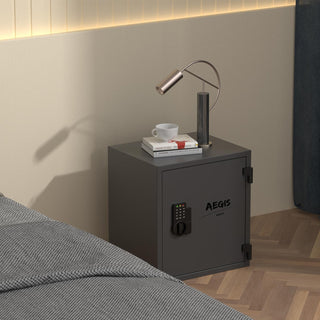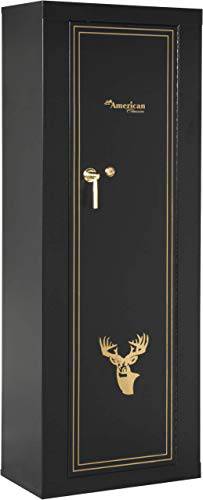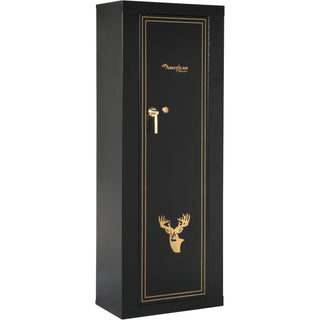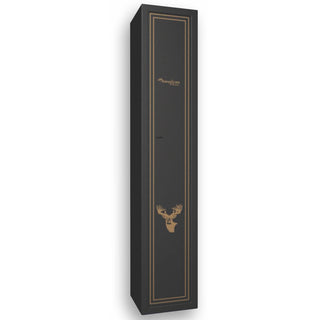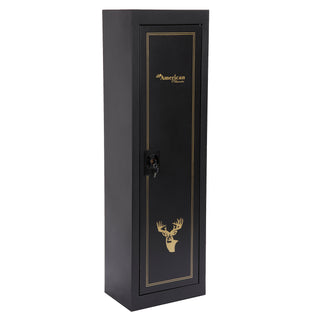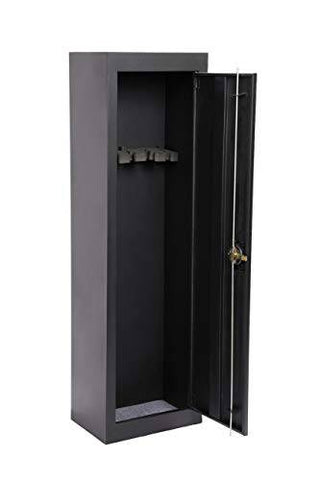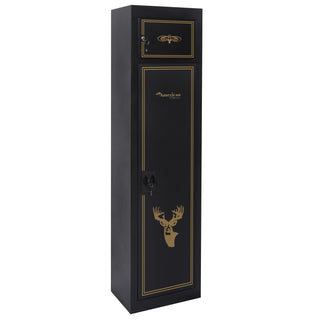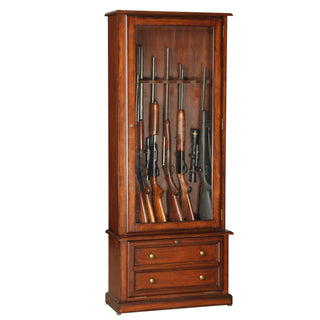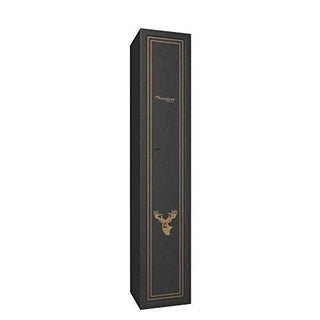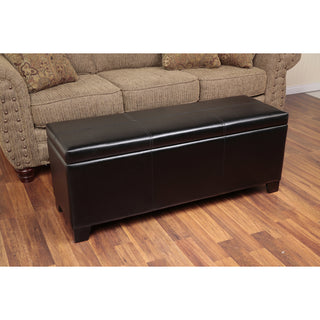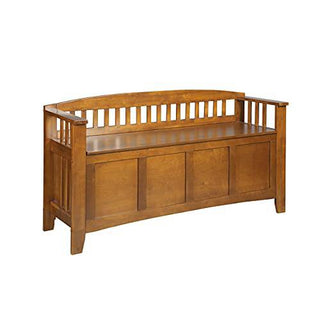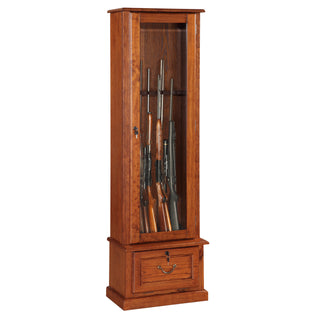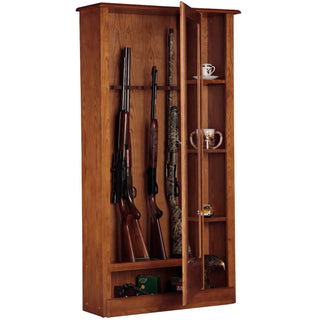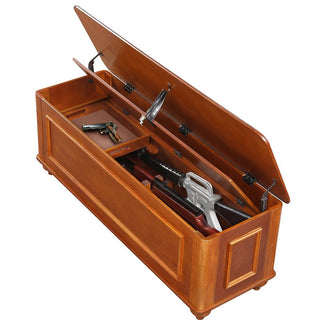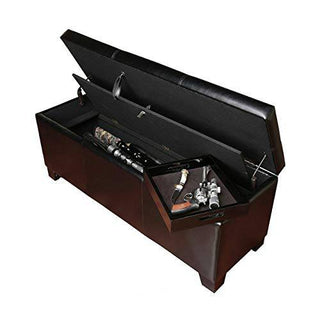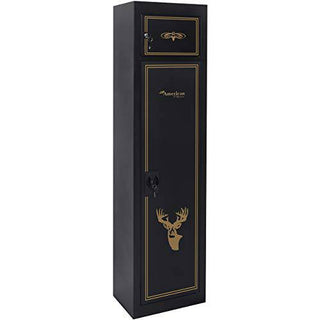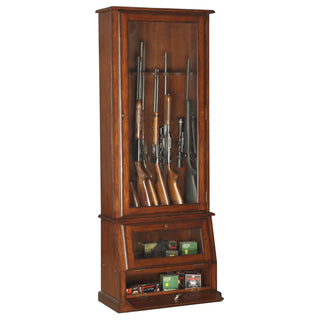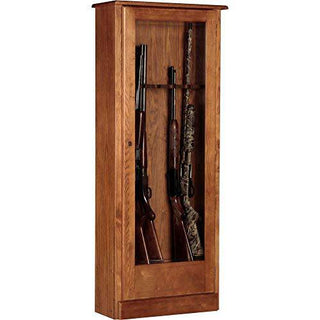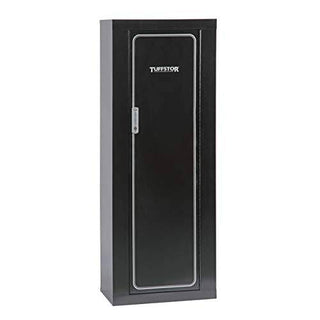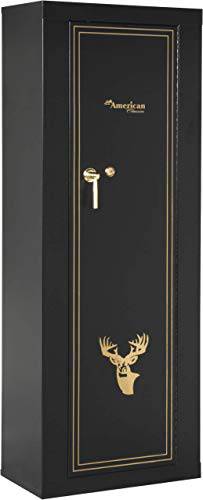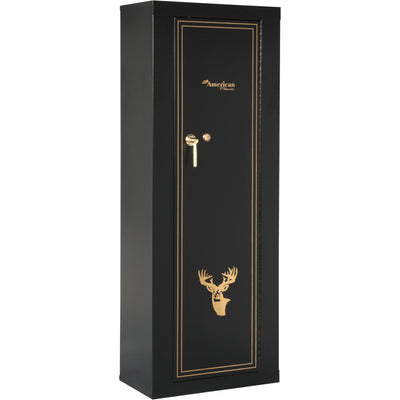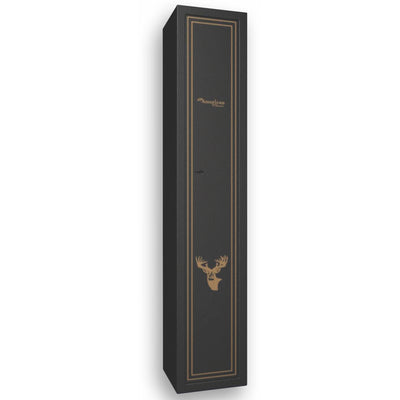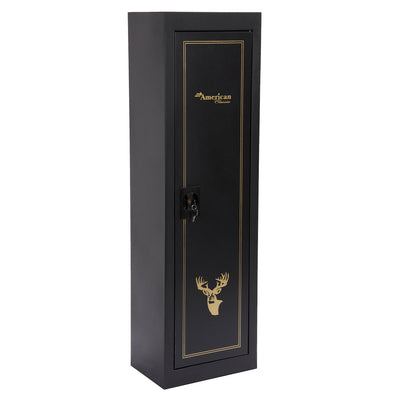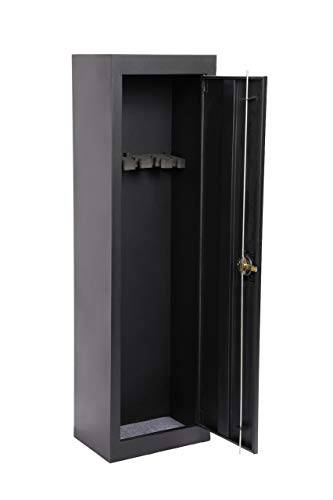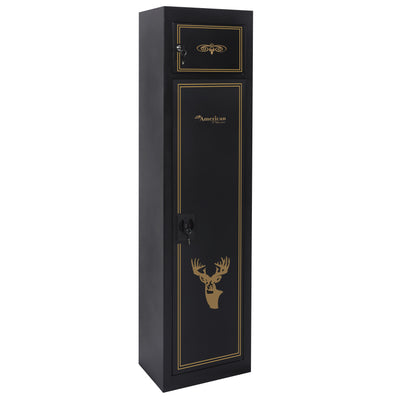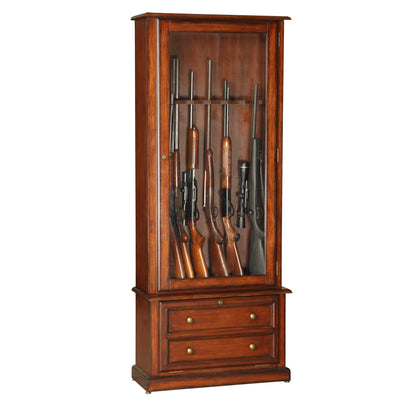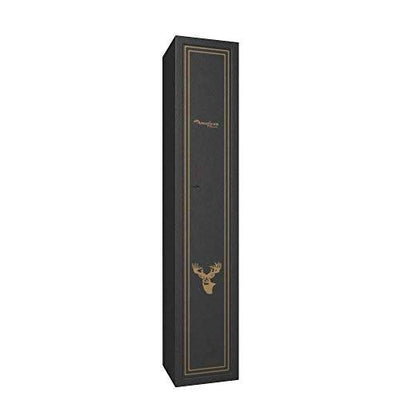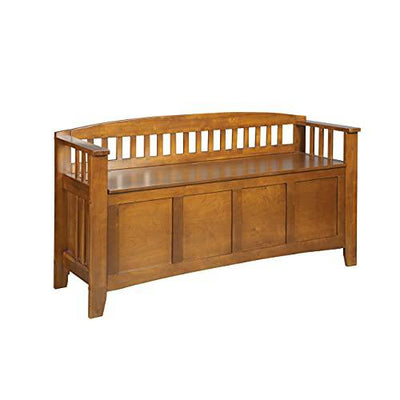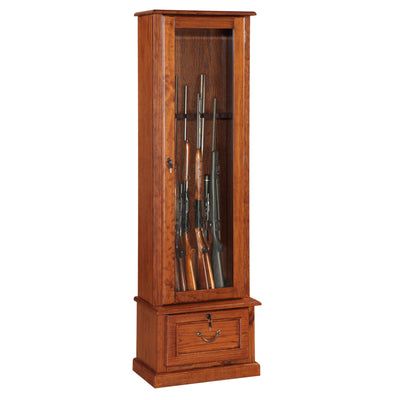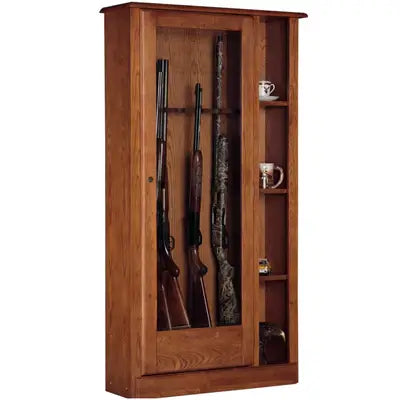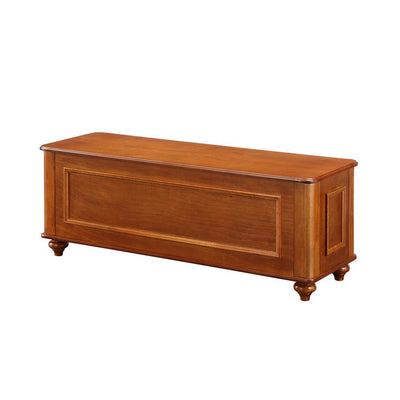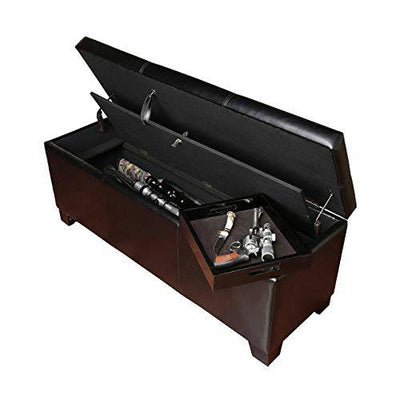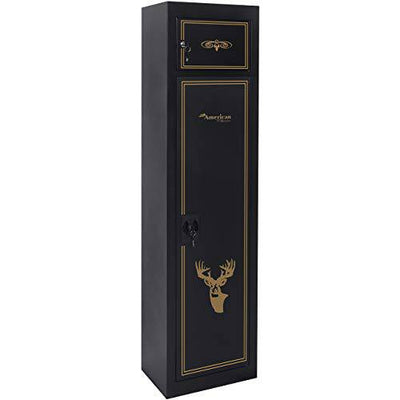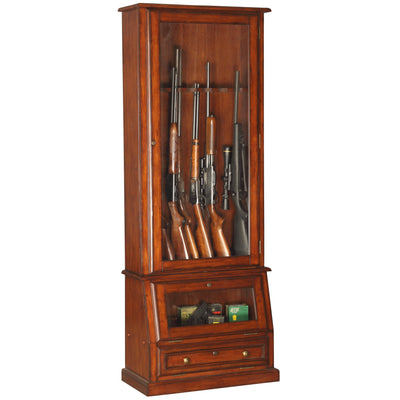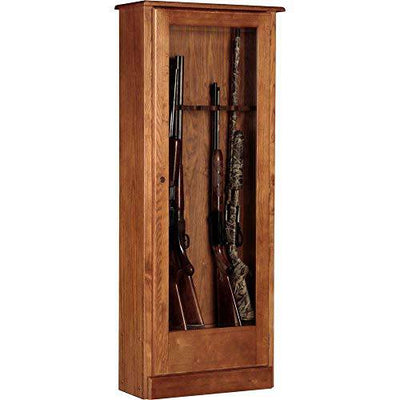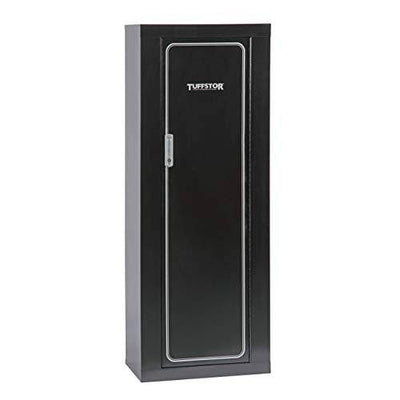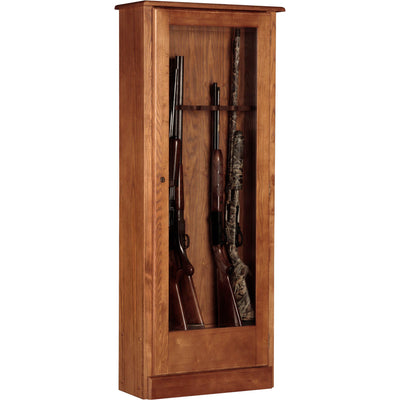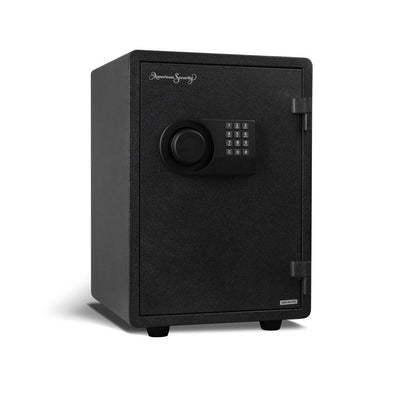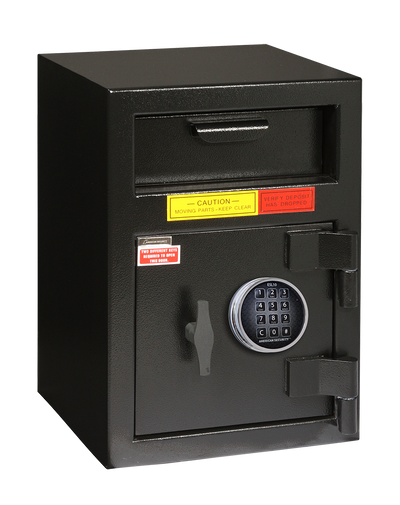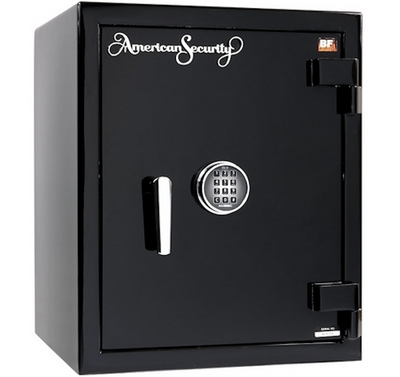*This post contains affiliate links to products. We may receive a commission for purchases made through these links, but it never influences our product selection process.
Table of Contents
Introduction
In the world of gun safes and vaults, different ratings and classifications are related to the security level of the safe. The thickness of the steel, the complexity of the locks, the resistance to fire – these crucial aspects of safety might seem like a jumble of codes and ratings, but they don't have to be a mystery anymore.
This article will explain the most common safety ratings and symbols. From residential security container ratings to the ins and outs of fire and burglary ratings to the lesser-known but equally important insurance ratings.
Whether you are a concerned homeowner wanting to ensure your family's safety or a business owner searching for top-notch protection, this article's got you covered. We're going to break down the language of safety, rating by rating, to help you make the best choice with confidence.
Ready to crack the code? Keep reading to do just that!
Why You Should Install Gun Safes

Stepping into the world of gun safes? You're in the right place. At their core, gun safes are about safeguarding firearms and ammo, ensuring they're out of reach from anyone but the rightful owner.
But that's not all they're good for. Many people trust these safes to protect crucial documents, cherished jewels, and hard-earned cash. For firearm license holders, a quality gun safe isn't just a good idea – it's a must-have to prevent accidents and potential theft from unwelcome visitors.
Let's be real: accidents can and do happen, especially with firearms around. But completely avoiding guns isn't always an option. That's why being proactive with a gun safe, whether in your home or car, is a smart move for safety and peace of mind.
Why You Need to Understand Ratings

Navigating the world of gun safes can be confusing, especially with all the advertising noise out there. Companies often use flashy slogans and big promises to catch your eye, and it's easy to get caught up in the hype.
But when it comes to gun safes, you can't afford to make a mistake. Your family's security and the protection of valuable items are at stake. That's why it's crucial to focus on something more concrete: the ratings.
These ratings might seem like a jumble of letters and numbers, but they tell a vital story about the safe's security, fire resistance, and quality. Understanding them is not always straightforward, but it's essential to making the right choice.
Luckily, we've done the hard work for you. We've researched gun safe ratings thoroughly, and we're here to help you understand them in clear and simple terms. Stick with us, and we'll guide you through these important markers, ensuring you choose a gun safe that's truly worthy of your trust.
Legal Requirements
When it comes to firearms and gun safes, the legal landscape can be a bit tricky to navigate. The laws vary widely from state to state, and you might be surprised to find that only eleven states have specific legislation relating to firearm locking devices.
Leaving firearms unsecured isn't just a legal risk; it's a life risk. Whether it's theft, accidents, or worse, an unsecured gun is a danger to everyone around it. Think of the children in your home or even yourself; a simple mistake can have devastating consequences.
Investing in a quality gun safe is more than a legal consideration; it's a commitment to safety and peace of mind.
Regulations For Gun Safes

As per Gun Safe Standards DOJ, gun safes should meet all of the below-specified requirements to be certified.
- The safes must have the capacity to house all firearms securely.
- It should have a functional electronic, mechanical, or biometric locking system.
- The combination of dial locking safes should provide the possibility of ten thousand combinations.
- Codes should ideally be a mix of letters, numbers (at least 3), or symbols.
- Locks must be secured on a hardened, drill-resistant material (preferably steel or a similar strong metal).
- There must be a minimum of 3 steel locking bolts with a thickness of half-inch that is operated by a separate handle and secured by the lock.
- The exterior walls of the safe should be 12 gauge (minimum) thick for a single-walled safe. If more than one steel wall forms the exterior, the sum of all should be 100 inches.
- Doors should be designed with at least two layers of 12 gauge steel. If it is only one layer, then the thickness of the steel must be seven gauge.
- The hinges of the vault door must be secure and deter the removal of the door through any external force.
Types Of Gun Safe Ratings
Safes are generally rated in two broad categories - UL and Insurance Ratings. These are further subdivided into
- Burglary Resistant Safes
- Residential Security Container rsc
- Insurance Ratings
-
Fire Ratings
Let's look at each of these in detail.
UL Ratings

UL is the abbreviation of Underwriters Laboratories, a global independent safety science company with more than a century of expertise in innovating safety solutions. It is a long-running institution that tests retail products and rates them accordingly. Their testing methods certify levels of security, reliability, and safety.
UL also checks the claims made by the manufacturers and either refutes or solidifies them. The goal is to test performance ratings, and they are known for their safety standards and are the benchmark upon which industry safety standards are tested.
Broadly, UL ratings are subdivided into two categories, Burglary Resistance and Residential Security Containers (also known as RSC or UL RSC). There are many subcategories within each of these broad areas, and we shall examine them carefully.
Burglary Ratings Explained

The tests are conducted to comprehend how effectively gun safes can withstand common burglary attempts or similar perilous intrusions and are a staple for the gun safe industry. The safe is made to suffer various and increasing grades of assaults, and the performance is recorded before awarding apt ratings.
Before we go ahead, let’s get a few more abbreviations out of the way:
TL- Tool Resistant
TR- Torch Resistant
NET- Net Working Time
TL-15
Comprised of 1-inch solid steel or material equivalent, these safes are designed to withstand a 15-minute break-in attempt. This rating not only considers the strength of the safe but the resilience of its construction, including its ability to endure assaults directed at the door or face.
TL-15 safes offer high security with sturdy construction, often accompanied by composite material or concrete layers. They stand as a symbol of strength, making them a valuable investment.
TL -15✕6
Similar to TL-15, the TL-15✕6 rating involves the same specifications but with a twist. While TL-15 focuses solely on the door or face, TL-15✕6 endures tool attacks on all fronts, including the top, sides, and bottom. This extensive testing ensures comprehensive door protection and overall burglar protection.
TL-30
The TL-30 rating ups the ante with testing conducted for 30 minutes. Built with 1-inch solid steel or a material equivalent, this rating ensures that the safe can withstand assaults from power saws, abrasive cutting wheels, and more. The test begins with directed attacks on the door or face and is awarded if, after 30 minutes, testers cannot gain entrance to the safe.
TL-30 ✕ 6
The TL-30✕6 rating takes the testing to a more rigorous level. With assaults on all six sides of the safe using standard hand tools, electrical hand tools, carbide drills, and more, this rating ensures maximum protection.
The 30-minute testing time, the safe's minimum tensile strength, and ability to withstand grinding and peeling make it a secure choice.
TRTL-30
With a TRTL-30 rating, you get a gun safe that has faced a NET working time of 30 minutes under the scrutiny of standard tools and a torch. This stringent testing ensures that the locking mechanism, construction classification, and overall integrity of the safe meet the highest standards of security.
These UL ratings form the foundation of understanding when it comes to safe construction, security rating, and overall reliability. By learning these classifications, you empower yourself to make informed decisions that align with your unique needs.
TRTL 15 ✕ 6
The TRTL 15 ✕ 6 rating is a stringent standard. It signifies that the gun safe has withstood both tools and torches attacking all six sides for a NET working time of 15 minutes. This comprehensive evaluation covers all bases, offering substantial burglar protection and door protection.
TRTL 30 ✕ 6
Elevating security, the TRTL 30 ✕ 6 rating showcases remarkable resistance. The "TR" signifies torch resistance, while "TL" represents tool resistance. This safe endured a full 30 minutes of assault and is one of the highest-rated personal safes on the market. It is an investment you can make with confidence, knowing it's backed by rigorous testing and validation.
TRTL 60 X 6
The TRTL 60 ✕ 6 rating takes security to an exceptional level. This standard signifies a 60-minute attack test on all six sides using tools and torches. Utilized frequently in commercial settings, it offers an outstanding level of security, fitting for high-value content. Due to their supreme protection, these safes fall into a premium category.
TXTL 60 X 6
For those seeking the epitome of security, the TXTL 60 ✕ 6 rating reigns supreme. The “X” stands for explosives, meaning that the gun safe endures attacks from tools, torches, and even explosives. This extreme testing makes it the maximum security level provided by Underwriters Laboratories, assuring unparalleled protection.
Residential Security Container (RSC)

The Underwriters Laboratory also offers this rating for safes ideal for residential uses. The NET working time and the number of attackers are how these ratings are classified. The basic standard to be followed are:
- The safe should have an anti-theft device that shall resist attack for at least 5 minutes.
- The disassembly of protected property and its removal must be included in the 5 minutes of the test.
- The product is to be placed in the intended position during the test duration.
- Tools used for the attack must include hammers, wrenches, chisels. Punches, pry bars, and screwdrivers of specified dimensions.
RSC Level 1 (UL RSC I)
This is the first-level rating. To qualify for this, the gun safe must be capable of withstanding vigorous break-in attempts by a single person. This attack takes place for 5 minutes.
The methods used to break in include drilling, tampering with parts, punching, and prying with tools. This is the most basic rating of safes, and if the product does not even have this rating, it’s not worth investing in it.
RSC Level 2 (UL RSC II)
The product has to withstand attack for ten minutes at this level. The episode is carried out by two individuals who use more aggressive tools such as carbide drills, pressure-applying devices, and picks.
The technicians also attempt to make an opening in the door or front face of the safe, and only if the product resists all these efforts is it given an RSC level 2 rating.
RSC Level 3 (UL RSC III)
This is the highest rating on the Residential Security Containers Scale. For this rating, the attack is carried out by two or three technicians.
The number of tools and the level of aggressiveness are also increased accordingly. The attack is made on all six sides of the safe - top, bottom, face, door, and two sides.
Insurance Ratings
All security safes have an insurance rating. This signifies the level of security a safe offers and the amount of cash that an insurance provider may offer.
The simple rule here is, the higher the rating, the better the safe.
Insurance ratings are dependent upon several factors. A few of them are discussed here for your reference.
- The thickness of the safe’s walls.
- The strength of the door.
- The complexity (thereby security) of the bolts and locking system.
- The general build quality of the safe.
Insurance ratings are only applicable if the installation of the safe has been done as per the manufacturer's recommendations. Unlike UL and RSC ratings, insurance ratings are based on the construction of the safe rather than on testing conducted on it.
Insurance Ratings offered by companies are described below. It is in ascending order, with the lowest rating mentioned first.
B Insurance Rating
This rating indicates that a gun safe’s body is made of steel less than half-inch thick. The door’s thickness is also less than 1’’. Underwriters Laboratory does not test this, and hence its performance may not be up to the mark.
The only requisite is the presence of a locking device, and they are not very effective in resisting burglary attempts.
C Insurance Rating
The “C” rating denotes that the gun safe has a half-thick body and a door around 1 inch thick. These are also not UL certified and offer a less secure safety vault.
A functioning lock is also a requirement. Despite a thicker body, the countermeasures to resist burglary are the same as B-class safes.
E Insurance Rating
This indicates that the safe door is one and a half-inch thick while the door must be one inch thick. This is the last rating offered by insurance companies.
An E rating is the final one that is offered without any sort of testing being conducted. As mentioned earlier, an E-rated safe provides the highest level of protection; thus, it is the rating you should look out for.
F Insurance Rating
An F insurance rating is essentially the same as the safes with a TL-15 rating by UL. The only difference is that the testing time is 30 minutes, and a few more tools are typically used. This is a tested rating and the basic one offered by insurance providers.
G & A Insurance Rating
This is similar to the UL-30 rating given by UL. The difference is that the testing is done on all six sides, including the safe floor. This is a good rating, and safes with this certification are often a good investment.
Fire Ratings

Fire class ratings denote the ability of materials to propagate or support fire. They also indicate the smoke produced by the product when exposed to fire. This is calculated using a flame spread index.
The flame spread index is obtained by examining how a material responds during a ten-minute tunnel test. This is a numeral value that ranges from one to one hundred.
UL Class 350
During a test conducted by the Underwriters Laboratories, the safe is exposed to heat for a stipulated period of time. The exterior temperature reaches 1550 degrees at this time. However, the interior must maintain a temperature of fewer than 350 degrees to be awarded this rating.
After the heating process, the safe is dropped from a height of 30 ft onto a base made of concrete rubble. After being allowed to cool down, the safe is placed into a preheated oven of 2000 degrees Fahrenheit.
This is called an explosive test, and it is conducted to determine whether the door will blow off. The rating is awarded if the safe remains unharmed after all this.
The test is conducted in three different time durations, and the ratings mention this time along with the rating.
- ½ hour- The safe is exposed to heat for half an hour.
- One hour- The safe is exposed to heat for 1 hour before being dropped from a height equivalent to 3 story building.
- Two hours- The time period of heat exposure is increased to two hours.
FAQ Guide
What are UL Ratings, and how do they relate to gun cabinets and safes?
UL Ratings are classifications provided by Underwriters Laboratories, an independent testing agency that evaluates products for safety and reliability. They assess the construction ratings of gun cabinets and safes to determine their burglary rating, fire rating, and other performance characteristics. They follow standardized tests defined to ensure the products have passed rigorous evaluations.
What is an RSC (Residential Security Container), and how does it differ from a TL-30 rating?
An RSC (Residential Security Container) is a rating given to safes designed for residential use. They must withstand tampering attacks and picking tools for a specific amount of time. In contrast, a TL-30 rating refers to a safe that can endure 30 minutes of attack using the same tools on all six sides, making it suitable for commercial applications like jewelry stores.
How does the construction of the safe body walls affect its security?
The construction of body walls plays a vital role in the overall security of a safe. Using steel body construction with a minimum tensile strength and open hearth steel increases resistance to rigorous prying and impact tests. The construction classification relates directly to how well the safe can adequately protect its contents.
What are the requirements for fire-resistant safes, and how are they tested?
Fire-resistant safes are designed to maintain an internal temperature below a specified level during a fire. They are tested by an independent fire testing agency that exposes the safe to extreme heat while monitoring the interior temperature. Fire safes must meet construction requirements to ensure that electrical conductors are arranged in a manner equivalent to the standards.
What is an insurance rating, and how does it align with UL ratings?
Insurance ratings are classifications given by insurance companies to safes based on their burglary and fire resistance. They consider UL ratings, construction ratings, and tests such as the TL-30 rating or RSC burglary rating. Safes with higher UL ratings are more likely to receive better insurance ratings, reflecting their ability to withstand break-ins and fires.
What's the importance of locks and electronic locks in safes?
Locks, including electronic locks, are crucial in determining a safe's resistance to picking tools and tampering attacks. A combination locked safe designed with robust electronic locks provides an extra layer of security, as it meets specific construction requirements and is harder to bypass than traditional locks.
What materials are used in the construction of safes?
Safes are typically constructed using steel body materials, open hearth steel, and concrete blocks. The minimum tensile strength of these materials and the way they are arranged contributes to the safe's overall resilience to break-in attempts, allowing them to adequately protect the contents.
What considerations should be taken into account for portable electric tools and safes?
When considering safes and portable electric tools, ensure that the safe's design can accommodate electrical conductors arranged to function with electronic locks or internal systems. Additionally, the safe's construction classification should be resistant to attacks using portable electric tools.
Are B rated safes suitable for commercial use?
B-rated safes are generally suitable for residential use but may not be ideal for commercial environments like jewelry stores, where higher-rated safes like TL-30 or TRTL-60✕6 are typically required. These higher-rated safes have been independently tested to withstand more aggressive attacks using the same tools and even explosives.
Conclusion
Investing in a high-rated safe aligns with your unique needs and offers robust protection. Understanding these ratings empowers you to make an informed decision, essential for safeguarding your valuables









